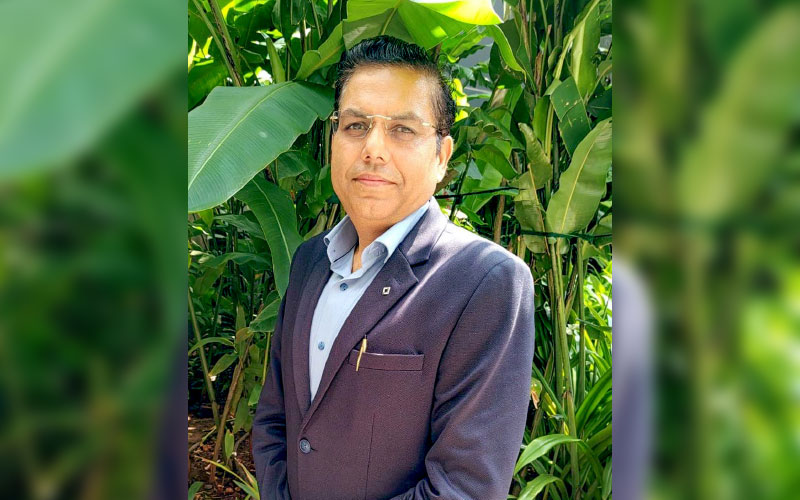Valmet’s supply chain network is designed to optimize lead times and drive efficiency through localized sourcing, streamlined inventory management, and advanced digital planning and monitoring tools that enable real-time visibility across operations. In an exclusive interview with Paper Mart, Mr. Manish Sharma, Director, Supply Chain-Asia Pacific, Valmet, highlighted that the company’s supply chain strategy in the Asia-Pacific region, particularly in India, is built around localization, agility, and resilience. The focus is on strengthening local supplier partnerships, enhancing vendor capabilities to align with global quality and sustainability standards, and reducing import dependence to ensure faster deliveries and cost efficiency. Looking ahead, Valmet aims to adopt greener logistics solutions and advance circular economy practices to build a future-ready supply chain.

Paper Mart: What is your supply chain strategy for the Asia- Pacific region, especially the Indian market and other countries, and the challenges associated with it? How do you overcome these challenges?
Manish Sharma: At Valmet, our supply chain strategy in the Asia-Pacific region, especially in India, is centered on localization, agility, and resilience. We focus on developing strong local supplier partnerships, and enhancing vendor capabilities to meet global quality and sustainability standards, and reducing reliance on imports to ensure faster deliveries and cost optimization. Across the region, we adopt a hub-and-spoke approach, leveraging strategic hubs to balance efficiency with responsiveness in diverse markets. The key challenges we face include geopolitical uncertainties, logistics and infrastructure constraints, supplier capability gaps, and demand volatility. We address these by investing in supplier development, diversifying sourcing, leveraging digital tools for better visibility and forecasting, collaborating with logistics partners, and aligning with Valmet’s sustainability goals. This enables us to build a resilient, customer-centric, and future-ready supply chain that adapts to the fast-evolving dynamics of the Asia-Pacific market.

We have implemented advanced digital tools such as real-time supply chain visibility platforms, predictive analytics for demand forecasting, and automation in warehouse and logistics operations to not only enhance our operational efficiency but also strengthen Valmet’s global competitiveness and reinforce our industry leadership.
PM: What are your inventory and logistic plans to ensure smooth supply chain operations? What key innovations and technological advancements have you implemented to enhance Valmet’s global competitiveness and industry leadership?
MS: At Valmet, our inventory and logistics plans are designed to balance efficiency, reliability, and responsiveness, ensuring smooth supply chain operations across global and regional markets. We follow a demand-driven approach with optimized safety stock levels, strategic warehouse locations, and multimodal logistics solutions to reduce lead times and improve delivery reliability.
On the innovation front, we have implemented advanced digital tools such as real-time supply chain visibility platforms, predictive analytics for demand forecasting, and automation in warehouse and logistics operations. These technological advancements not only enhance our operational efficiency but also strengthen Valmet’s global competitiveness and reinforce our industry leadership by delivering sustainable, customer-centric, and future-ready supply chain solutions.
Watch: In Pursuit of Lesser Water Footprint
PM: Please tell us about your sustainability initiatives adopted in your supply chain network?
MS: Sustainability is at the core of Valmet’s supply chain strategy, and we are committed to embedding responsible practices across our global network. We work closely with suppliers to ensure compliance with our code of conduct, emphasizing ethical sourcing, safe working conditions, and environmental responsibility.
Our initiatives focus on reducing carbon emissions through increased local sourcing, optimizing logistics with greener transport modes, and improving energy efficiency in warehousing and distribution. We actively support supplier development programs to enhance their sustainability performance, while also integrating circular economy principles such as recycling, waste reduction, and responsible material use.
By leveraging digital tools for supply chain transparency and carbon footprint monitoring, we ensure accountability and measurable progress. These efforts not only align with Valmet’s long-term climate and sustainability targets but also enable us to create a more resilient, responsible, and future-ready supply chain for our customers.
PM: How do you enhance your global supply chain strategies to contribute towards the profitable growth of the business? How do you assess the risks in the supplier management process?
MS: At Valmet, we enhance our global supply chain strategies by driving efficiency, resilience, and sustainability, all of which directly contribute to profitable business growth. We achieve this through localization of sourcing, digitalization of planning and logistics, and continuous supplier development to ensure quality, cost competitiveness, and agility in meeting customer needs.
Risk assessment in supplier management is a structured process where we evaluate suppliers on parameters such as financial stability, quality performance, compliance with safety and sustainability standards, and geopolitical exposure. Regular audits, performance scorecards, and real-time monitoring tools help us identify vulnerabilities early, while dual sourcing, strategic partnerships, and long-term contracts mitigate risks.
This proactive approach not only safeguards supply continuity but also strengthens profitability by minimizing disruptions, optimizing costs, and delivering superior value to customers.

We enhance our global supply chain strategies through localization of sourcing, digitalization of planning and logistics, and continuous supplier development to ensure quality, cost competitiveness, and agility in meeting customer needs.
PM: How do you see the current demand–supply dynamics affecting the Indian pulp and paper industry?
MS: The Indian pulp and paper industry is currently witnessing a dynamic shift in demand–supply patterns, driven by rising consumption, capacity expansions, and evolving sustainability requirements. Demand is steadily growing, fueled by increasing literacy rates, growth in packaging due to e-commerce, and a strong push for sustainable alternatives to plastics.
At the same time, supply is facing constraints from rising raw material and energy costs, fiber availability challenges, and the need for significant technology upgrades to meet global efficiency and environmental standards. Overall, the industry is moving towards greater efficiency and sustainability, and companies that invest in advanced technologies, circular economy practices, and resilient supply chains are best positioned to capitalize on the opportunities in this evolving landscape.
PM: How do you ensure excellence in customer service, optimize lead times, and strengthen aftermarket support to meet evolving client expectations?
MS: At Valmet, we ensure excellence in customer service by combining a strong local presence with global expertise, enabling us to stay closely connected with customers and respond quickly to their evolving needs.
We optimize lead times through localized sourcing, efficient inventory management, and the use of advanced digital planning and monitoring tools that provide real-time visibility across the supply chain.
Our aftermarket support is strengthened by a robust service network, quick availability of spare parts, remote support capabilities, and predictive maintenance solutions powered by automation and data analytics. By proactively understanding customer challenges and delivering reliable, timely, and value-adding services, we not only enhance customer satisfaction but also build long-term partnerships based on trust and performance.
Also Read: Paper Mart Emagazine Aug-Sep, 2025
PM: How do you ensure transparency and traceability of your entire value chain from sourcing of raw materials to recycling of products?
MS: At Valmet, we ensure transparency and traceability across the entire value chain by integrating rigorous supplier compliance processes, digital monitoring systems, and sustainability standards from the very start of sourcing to the end-of-life recycling of our products. All our suppliers are required to adhere to Valmet’s code of conduct, which emphasizes ethical practices, human rights, and environmental responsibility.
We leverage digital platforms and data-driven tools to track material origins, monitor supplier performance, and ensure adherence to global sustainability benchmarks. In addition, we collaborate with partners to promote circular economy practices, enabling recycling, reuse, and responsible disposal of products. Regular audits, third-party assessments, and open reporting further strengthen accountability, ensuring that every stage of our value chain is transparent, responsible, and aligned with Valmet’s long-term commitment to sustainable business.
PM: What are your future plans for technologically advanced, cost-effective supply chain operations?
MS: Our future plans for supply chain operations focus on leveraging technology to build smarter, more cost-effective, and resilient networks that deliver greater value to customers. We are committed to embedding sustainability into these advancements by adopting greener logistics solutions and promoting circular economy practices. By combining technology, efficiency, and responsibility, we aim to create a future-ready supply chain that not only reduces costs but also drives competitiveness and long-term growth for Valmet and our customers.

We ensure transparency and traceability across the entire value chain by integrating rigorous supplier compliance processes, digital monitoring systems, and sustainability standards from the start of sourcing to the end-of-life recycling of our products.



